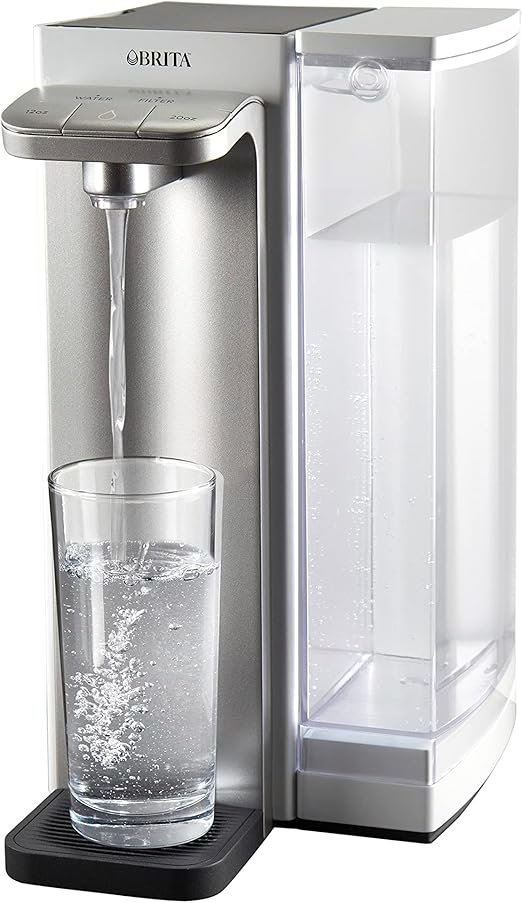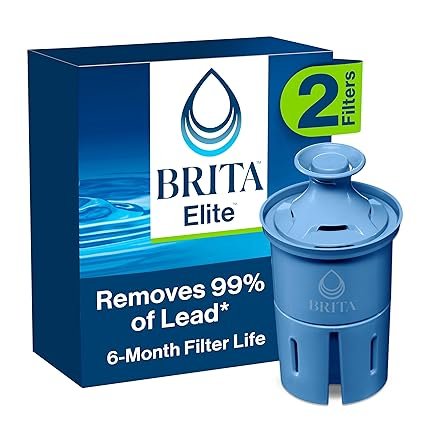If you’re using a Brita water filter and noticed greenish slime or cloudy discoloration forming inside your pitcher, you’re not alone. Many Brita users report signs of algae (green residue) in their filter pitchers or dispensers—especially during the warmer months. In this blog post, we’ll explore why algae forms in Brita filters, how to prevent it, and recommend a few top-rated Brita products that are easier to maintain.
Whether you’re using Brita for its convenience or its ability to reduce chlorine, heavy metals, and other impurities, knowing how to keep it clean and safe is essential.
📌 Top 5 iRobot Roomba Vacuums-Which Model Is Right for You?
What Causes Algae to Grow in Brita Filters?
Algae growth in a Brita filter pitcher or dispenser is usually caused by exposure to sunlight or indoor light, combined with residual moisture and nutrients. Even filtered water contains tiny organic particles. If your Brita pitcher sits out on a countertop where it gets light exposure, you’re creating the perfect environment for algae or mold to thrive.
Poor cleaning habits also contribute to the issue. If the pitcher isn’t cleaned regularly and thoroughly, biofilm can build up, giving algae a surface to cling to. Combine this with warm room temperatures and infrequent filter changes, and you’ve got a mini green pond in your kitchen.
Signs of Algae in Your Pitcher
- Green slime or residue on the inside of the reservoir or pitcher
- Cloudy water that wasn’t there before
- A slightly musty or earthy odor
- Discoloration or floating specks in the filtered water
If you notice any of these signs, it’s time to deep-clean your Brita pitcher and replace the filter immediately.
Is It Safe to Drink Water with Algae in the Pitcher?
No. If you suspect algae or mold contamination, stop using the water immediately. Even though algae isn’t always toxic, some species can produce harmful compounds. Drinking contaminated water can cause gastrointestinal issues and other health concerns, especially in children and people with weak immune systems.
How to Prevent Algae from Growing in Your Pitcher
- Keep It in the Fridge or Away from Light
Algae needs light to grow. Store your pitcher in the refrigerator or a dark cabinet when not in use. Avoid placing it near windows or under kitchen lights. - Clean Your Pitcher Weekly
At least once a week, wash all removable parts (lid, reservoir, pitcher) with warm water and mild dish soap. Avoid harsh chemicals, but scrub gently with a soft sponge or bottle brush to remove biofilm. - Dry It Completely During Filter Changes
Every time you change the filter, completely dry the pitcher before inserting the new one. Damp, closed containers are a breeding ground for microbes. - Replace Filters on Time
Old filters not only reduce water quality but can also harbor bacteria and organic residue that contribute to algae. Follow Brita’s guidelines and replace the filter every 2–6 months depending on usage and filter type. - Avoid Refilling Before It’s Empty
Topping off water without fully emptying the pitcher can create stagnant layers of old and new water—another way to invite algae growth.
How to Clean a Brita Pitcher with Algae
If you’ve already noticed algae, here’s how to safely clean your Brita:
- Disassemble the pitcher completely (remove filter, lid, reservoir).
- Wash all components with warm soapy water using a soft sponge.
- For stubborn algae, soak parts in a 1:3 vinegar-water solution for 15–20 minutes.
- Rinse thoroughly with clean water and allow to air dry completely before reassembling.
- Insert a new filter—never reuse a filter that’s been exposed to algae.
Avoid using bleach or harsh chemicals, as they can leave residues that contaminate your drinking water.
Best Brita Products That Are Easy to Maintain
- Brita UltraMax Dispenser with Longlast+ Filter
Perfect for families or heavy water drinkers. It sits in the fridge and holds up to 18 cups of water. The Longlast+ filter only needs replacing every 6 months and is certified to remove lead, chlorine, and other heavy metals. - Brita Tahoe 10-Cup Pitcher with SmartLight Indicator
This model features a SmartLight filter indicator that tells you when to change the filter. Its sleek design fits easily into the fridge door, and the flip-top lid makes refilling super convenient. - Brita Premium Filtering Water Bottle (26 oz)
If you’re on the go, this is a great way to keep filtered water with you at all times. It’s BPA-free, dishwasher-safe, and uses Brita’s standard filters. Also easy to clean and doesn’t sit around long enough for algae to form.
Conclusion: Keep Your Brita Pitcher Clean, Safe, and Algae-Free
Brita filters offer a convenient and eco-friendly way to enjoy cleaner, better-tasting water—but they do require a bit of upkeep. By keeping your pitcher clean, dry, and out of the light, you can prevent algae from forming and make sure your water stays safe and fresh.
If you’re looking to upgrade or replace your current Brita, consider models that are easy to maintain, have better filter indicators, and suit your lifestyle. Whether you’re a busy parent, student, or office worker, there’s a Brita that works for you.
Clean water starts with clean habits!
FAQs
- Can I use vinegar to clean my Brita pitcher?
Yes. A diluted vinegar solution (1 part vinegar to 3 parts water) is effective for removing algae or odor. Rinse thoroughly afterward. - How often should I replace my filter?
Standard filters: every 2 months or 40 gallons. Longlast+ filters: every 6 months or 120 gallons. - Is it okay to put Brita pitchers in the dishwasher?
Some models are top-rack dishwasher safe. Always check the manual. The filter should never go in the dishwasher. - Why does my Brita water smell bad?
This could be a sign of mold or algae growth. Try cleaning the pitcher and replacing the filter immediately. - Can algae grow in filtered water?
Yes, if exposed to light and not cleaned regularly. Filtered water still contains tiny organic particles that can feed algae.
This post is part of the Amazon Affiliate program, which means I may earn a small commission at no additional cost to you.



